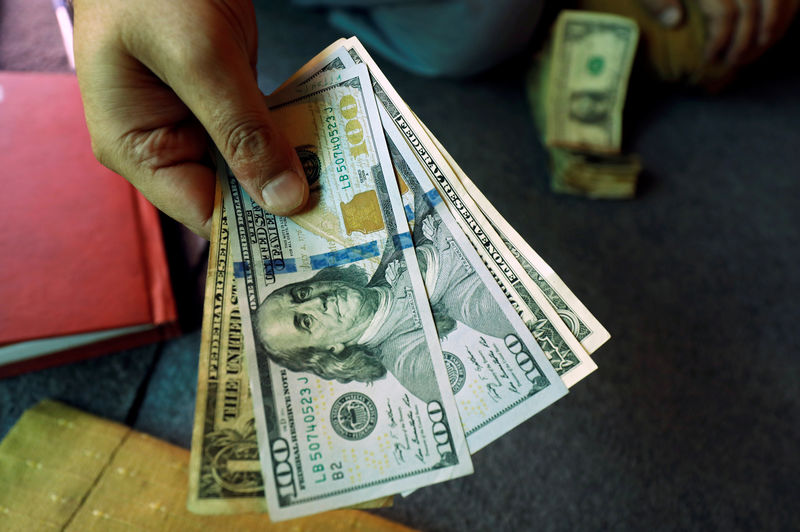
Forex - Dollar Drifts Higher in Thin Trade as Hong Kong Flares up Again
by Investing.comBy Geoffrey Smith
Investing.com -- The dollar started the week slightly higher in Europe, albeit in modest volumes depressed by public holidays in the U.K. and U.S., against a backdrop of simmering tension between the U.S. and China.
By 3:45 AM ET (0745 GMT), the dollar index, which tracks the greenback against a basket of developed market currencies, was up 0.1% at 99.975, drifting to its highest in a week.
Dollar gains were narrow but broad-based, with the kiwi and the Swiss franc – two currencies at opposite ends of the risk spectrum – faring worst. USD/CHF rose 0.3% to 0.9734.
The Memorial Day weekend in the U.S. has largely muted news flow out of that country, but the dollar drifted back towards its March high against the Chinese yuan after pro-democracy protests again erupted in Hong Kong, prompting a strong response from local security forces.
The dollar was at 7.1552 yuan in the offshore market by 3:45 AM, up 0.1%.
The euro was sluggish after data confirming that Germany, the currency union’s biggest economy, fell into recession in the first quarter, as gross domestic product contracted by 2.2%. The data are somewhat backward-looking and arguably more weight will be put on the release of the Ifo business climate for May, due at 4 AM ET.
Analysts at Nordea argued in a weekly preview that the euro has yet to price in any benefits from the Franco-German proposal for joint debt issuance and modest fiscal transfers to fund the EU’s coronavirus recovery fund – something that would represent a big step towards a central fiscal arm at European level.
Nordea’s Andreas Steno Larsen argued that the lack of enthusiasm for the euro reflected the hurdles that the Franco-German plan still faces: although the EU Commission is likely to endorse it in an important strategy document later this week, four countries – the Netherlands, Austria, Sweden and Finland – detailed their opposition in a jointly authored paper at the weekend.
Even so, the euro’s stagnation below $1.09 “leaves a pretty good risk/reward in playing the outside chance of a breakthrough for the proposal via long EUR/USD structures in option space,” they argued.
The British pound, meanwhile, was stable but under pressure from the prospect of the Bank of England cutting official interest rates below zero at its next policy meeting in June.
“GBP is not looking good with a perpetual underlying double deficit and a very clear risk of negative carry ahead,” Steno Larsen wrote.
The Sterling index fell 2.2% last week and is starting the week near a two-month low, while GBP/USD was at $1.2171, effectively unchanged from Friday.